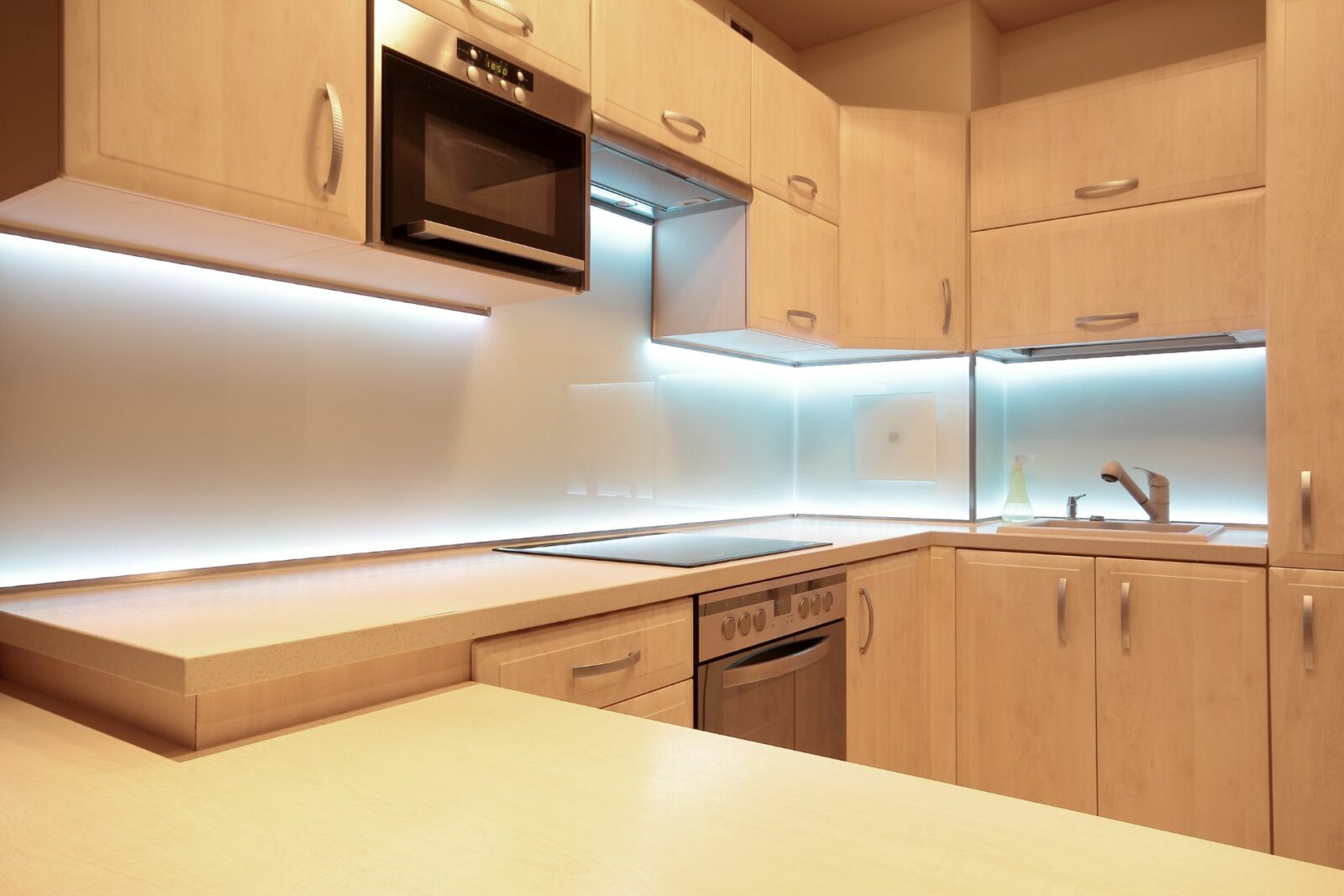Product Specifications and Features: Led Under Cabinet White Strip Light 4 Pack

So, you’ve got your hands on a 4-pack of LED under-cabinet lights? Fantastic! Let’s dive into the nitty-gritty details – because knowing your lumens from your lux is half the battle (the other half is avoiding a faceplant while installing them).
Brightness, Color Temperature, and Power Consumption
This table compares the specs of four different (imaginary, but totally plausible!) 4-pack LED under-cabinet light sets. Remember, these are examples, and actual product specs will vary by brand and model. Always check the manufacturer’s information!
| Brand | Model Number | Brightness (Lumens per Strip) | Color Temperature (Kelvin) | Power Consumption (Watts per Strip) | Price Range |
|---|---|---|---|---|---|
| BrightLightCo | BLC-UC4-Warm | 400 | 2700K (Warm White) | 5 | $25-$35 |
| GloBeam | GB-UC4-Cool | 500 | 6500K (Cool White) | 6 | $30-$40 |
| LuminaTech | LT-UC4-Daylight | 600 | 5000K (Daylight) | 7 | $40-$50 |
| SparkleShine | SS-UC4-Dimmable | 350 (Dimmable) | 3000K (Warm White, Dimmable) | 4 (Dimmable) | $35-$45 |
Adhesive Backing System
The adhesive backing is crucial for easy installation. Most reputable brands use a strong, 3M-type double-sided adhesive tape. This tape is designed for durability, capable of holding the lights securely on most smooth, clean surfaces like wood, metal, or glass. However, remember to thoroughly clean the surface before application to ensure maximum adhesion. The application process is typically straightforward; peel and stick! But remember, “peel and stick” doesn’t mean “peel and regret.” Take your time, align the lights properly, and press firmly along the entire length.
Installation Methods: Hardwiring vs. Plug-in
Choosing between hardwiring and plug-in depends on your comfort level with electrical work and your kitchen’s setup.
Led under cabinet white strip light 4 pack – Let’s examine each method:
- Hardwiring: This method provides a cleaner, more permanent installation. It involves connecting the lights directly to your home’s electrical system. This usually requires basic electrical knowledge and may necessitate turning off the power at the breaker before beginning.
- Step 1: Turn off the power at the breaker.
- Step 2: Carefully connect the wires according to the manufacturer’s instructions.
- Step 3: Secure the wiring and test the lights.
- Step 4: Turn the power back on at the breaker.
- Plug-in: This is the easier option for DIY enthusiasts. The lights come with a plug that can be inserted into a nearby outlet. This method eliminates the need for any electrical wiring expertise.
- Step 1: Clean the surface where you’ll install the lights.
- Step 2: Peel and stick the lights to the desired location.
- Step 3: Plug the lights into a nearby outlet.
- Step 4: Admire your handiwork (and the beautifully lit cabinets!).
Alternative Lighting Solutions and Comparisons

So, you’re thinking about illuminating your cabinets, huh? Good choice! But before you commit to our fabulous 4-pack of LED under-cabinet strip lights (which, let’s be honest, are the *best*), let’s explore a few other options. Because, well, informed consumers are happy consumers, and happy consumers are…well, you get the picture.
Let’s dive into the dazzling world of under-cabinet lighting alternatives, pitting our LED strip lights against the competition. Think of it as a lighting showdown, but without the explosions and dramatic music (unless you want to add that – we’re not judging).
Comparison of Under-Cabinet Lighting Options, Led under cabinet white strip light 4 pack
Choosing the right under-cabinet lighting can dramatically change the look and feel of your kitchen. The right lighting can create a warm, inviting atmosphere or a bright, functional workspace. This comparison will help you decide which option best suits your needs and budget.
- LED Strip Lights (like ours!): Pros: Affordable, energy-efficient, customizable length, easy installation. Cons: Can be less bright than other options if not carefully chosen, may require additional power supplies for longer lengths.
- Puck Lights: Pros: Easy to install, discrete appearance. Cons: Can cast harsh shadows, limited adjustability, may not provide enough light for larger cabinets.
- Rope Lights: Pros: Flexible, can be easily shaped to fit different cabinet configurations. Cons: Can be more expensive than LED strips, more complex installation.
Warm White vs. Cool White LED Lights
Now, let’s talk color temperature. This isn’t about how hot your lights get (though LEDs stay pretty cool!), it’s about the *feel* of the light. Warm white (think candlelight) creates a cozy, inviting atmosphere, perfect for evening gatherings. Cool white (think bright sunlight) is better for task lighting, making it easier to chop vegetables or find that elusive spice. It’s a matter of personal preference and intended use. Choosing the wrong color temperature can make your kitchen feel either too sterile or too dim.
Imagine this: You’re whipping up a gourmet meal. Cool white lights will help you precisely dice those onions, while warm white lights will set a romantic mood once your culinary masterpiece is ready to be enjoyed. It’s all about balance, my friend.
